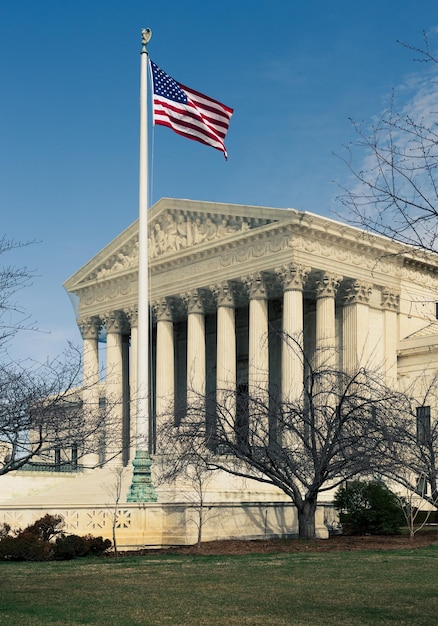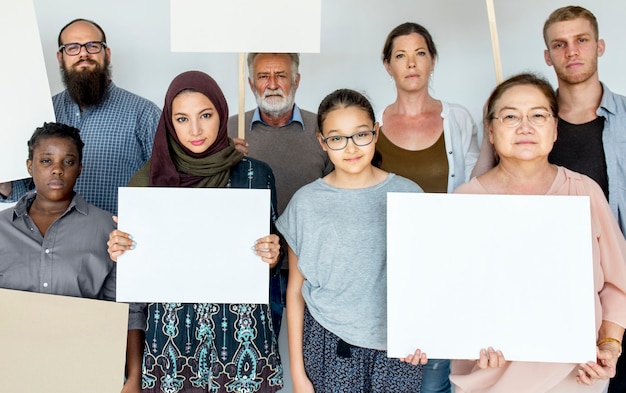US Supreme Court Ruling on Immigration: A Comprehensive Overview

The US Supreme Court’s rulings on immigration law can significantly impact the lives of millions, shaping policies, enforcement practices, and the legal landscape for immigrants and their families.
The **US Supreme Court Ruling on Immigration: A Comprehensive Overview of the Decision** serves as a cornerstone in defining the boundaries and applications of federal immigration laws, influencing everything from deportation procedures to eligibility for asylum and the rights of immigrants within the United States.
The Supreme Court’s Role in Immigration Law
The Supreme Court plays a critical role in shaping immigration law in the United States. Its decisions interpret the Constitution and federal statutes, setting precedents that guide lower courts and government agencies.
Establishing Legal Precedents
The court’s rulings establish legal precedents that define the scope and limits of immigration laws. These precedents often have far-reaching implications, affecting the lives of immigrants and the policies implemented by government agencies.
Interpreting Immigration Statutes
Another key function of the Supreme Court is to interpret immigration statutes passed by Congress. These interpretations provide clarity on complex legal issues, ensuring that laws are applied consistently across the country.

- Cases involving deportation procedures
- Eligibility for asylum
- The rights of immigrants within the United States
The Supreme Court’s involvement in immigration law is essential for ensuring fairness, consistency, and justice within the legal system. By interpreting and applying the Constitution and federal statutes, the court plays a crucial role in protecting the rights and well-being of immigrants in the United States.
Key Immigration Cases Decided by the Supreme Court
Several landmark immigration cases decided by the Supreme Court have had a lasting impact on the legal landscape. These cases provide critical insights into the court’s approach to immigration law and its implications for individuals and families.
Arizona v. United States (2012)
In 2012, the Supreme Court addressed the controversial Arizona SB 1070 law, which aimed to crack down on illegal immigration. Key provisions of the law were challenged as unconstitutional.
Sessions v. Dimaya (2018)
The Supreme Court examined the definition of “aggravated felony” in immigration law, focusing on whether it was unconstitutionally vague. The case involved a lawful permanent resident facing deportation.
Trump v. Hawaii (2018)
This case challenged President Trump’s travel ban, which restricted entry into the United States for individuals from several Muslim-majority countries. The Supreme Court considered whether the ban was lawful and constitutional.

These cases illustrate the Supreme Court’s significant role in shaping immigration law. By weighing constitutional principles and statutory provisions, the court’s decisions have a far-reaching impact on immigration policies and the lives of immigrants in the United States.
The Impact of Supreme Court Rulings on Immigration Policy
Supreme Court rulings on immigration matters play a pivotal role in shaping the direction of immigration policy in the United States. These decisions often influence how the government enforces immigration laws and the protections afforded to immigrants.
Enforcement Priorities
Supreme Court decisions can guide enforcement priorities for immigration agencies like ICE and CBP. Rulings that clarify the scope of immigration laws can influence which individuals are targeted for deportation and the procedures that must be followed.
Legislative Responses
In some cases, Supreme Court rulings prompt legislative responses from Congress. Lawmakers may seek to amend existing laws or enact new legislation to address issues raised by the court’s decisions. This can lead to significant shifts in immigration policy.
Impact on Immigrant Communities
The Supreme Court’s rulings have a direct impact on immigrant communities. Decisions that uphold or strike down certain immigration policies can affect the rights, opportunities, and overall well-being of immigrants and their families.
- The rights of immigrants
- Opportunities
- Overal well-being of immigrants and their families
By setting legal precedents and interpreting immigration laws, the Supreme Court serves as a critical player in shaping immigration policy. Its decisions have far-reaching consequences for immigrants and the broader society.
Legal Challenges and Future Trends in Immigration Law
Immigration law is constantly evolving, with new legal challenges and emerging trends shaping the landscape. Understanding these developments is essential for anticipating future changes and advocating for fair and just immigration policies.
Emerging Legal Issues
Several emerging legal issues are gaining prominence in immigration law. These include challenges related to technology and surveillance, the rights of asylum seekers, and the treatment of vulnerable populations.
Potential Supreme Court Cases
Several immigration-related cases are likely to reach the Supreme Court in the coming years. These cases address critical issues such as border security, deportation procedures, and the rights of immigrants facing removal.
Advocacy and Reform Efforts
Advocates and reformers continue to push for changes in immigration law and policy. Their efforts focus on promoting comprehensive immigration reform, protecting the rights of immigrants, and ensuring fair and humane treatment for all.
The ongoing legal challenges and advocacy efforts highlight the dynamic nature of immigration law. As new issues arise and societal values evolve, the legal landscape will continue to adapt and change.
The Role of Technology in Immigration Enforcement
Technology plays an increasingly significant role in immigration enforcement, impacting everything from border security to interior enforcement and surveillance. Understanding these technological advancements is essential for assessing their implications on civil liberties and due process.
Border Security Technologies
A variety of technologies are used to secure the border, including surveillance drones, sensors, and facial recognition systems. These technologies aim to detect and deter illegal crossings, but also raise concerns about privacy and the potential for misuse.
Interior Enforcement Technologies
Immigration agencies like ICE use various technologies to identify and apprehend individuals living in the United States without authorization. These technologies include data analytics, social media monitoring, and biometric identification systems.
Impact on Civil Liberties
The use of technology in immigration enforcement raises significant concerns about civil liberties. Critics argue that these technologies can lead to unwarranted surveillance, profiling, and discrimination against immigrant communities.
As technology continues to advance, it is crucial to carefully consider its implications on immigration enforcement and ensure that safeguards are in place to protect fundamental rights and freedoms.
Understanding Immigration Courts and Procedures
Immigration courts play a critical role in adjudicating immigration cases and making decisions about deportation, asylum, and other immigration-related matters. Understanding the procedures and processes within these courts is essential for navigating the legal complexities of immigration law.
The Structure of Immigration Courts
Immigration courts are part of the Executive Office for Immigration Review (EOIR), an agency within the Department of Justice. These courts are responsible for hearing cases involving immigration violations and determining whether individuals should be deported from the United States.
Deportation Proceedings
Deportation proceedings are formal legal proceedings in which the government seeks to remove an individual from the United States. These proceedings involve presenting evidence, cross-examining witnesses, and making legal arguments before an immigration judge.
Asylum Claims
Asylum claims involve individuals seeking protection from persecution in their home countries. Asylum seekers must demonstrate that they have a well-founded fear of persecution based on their race, religion, nationality, political opinion, or membership in a particular social group.
- Race
- Religion
- Nationality
- Political Opinion
Navigating immigration courts and procedures can be challenging, particularly for individuals who are not familiar with the legal system. Seeking legal representation and understanding the processes involved are essential for protecting one’s rights and achieving a favorable outcome.
| Key Point | Brief Description |
|---|---|
| 🏛️ SCOTUS role | Interprets laws, sets precedents in immigration. |
| ⚖️ Key Cases | Arizona v. US, Sessions v. Dimaya, Trump v. Hawaii. |
| 🛂 Tech Impact | Border security, interior enforcement tech raises privacy concerns. |
| 🛡️ Immigration Courts | Handle deportation, asylum claims; part of EOIR. |
Frequently Asked Questions
▼
The Supreme Court interprets immigration laws, setting precedents that guide lower courts and government agencies. These rulings define the scope and limits of immigration laws.
▼
Supreme Court decisions influence enforcement priorities, prompt legislative responses, and directly impact immigrant communities by upholding or striking down specific immigration policies.
▼
Notable cases include Arizona v. United States (2012), Sessions v. Dimaya (2018), and Trump v. Hawaii (2018), which addressed state immigration laws, “aggravated felonies,” and travel bans, respectively.
▼
Technology such as surveillance drones and facial recognition systems are used for border security and interior enforcement, raising concerns about privacy and the potential for misuse.
▼
Immigration courts handle deportation and asylum cases. Deportation involves presenting evidence and legal arguments, while asylum seekers must demonstrate a well-founded fear of persecution.
Conclusion
The **US Supreme Court Ruling on Immigration: A Comprehensive Overview of the Decision** underscores the enduring significance of the judiciary in shaping immigration law. Its rulings not only interpret statutes but also define the very fabric of immigration policy, impacting millions of lives and setting the course for future legal challenges and reforms. Staying informed about these developments is essential for everyone concerned about justice and fairness in immigration.





